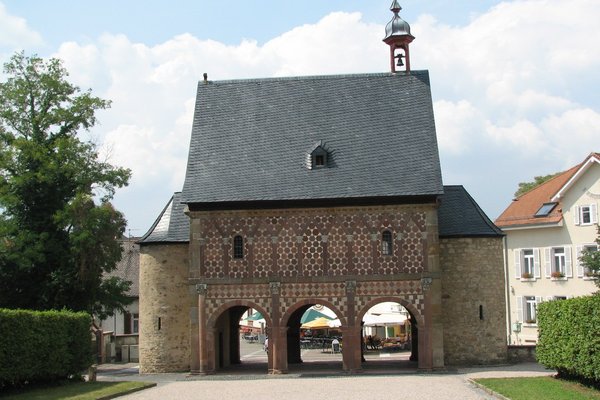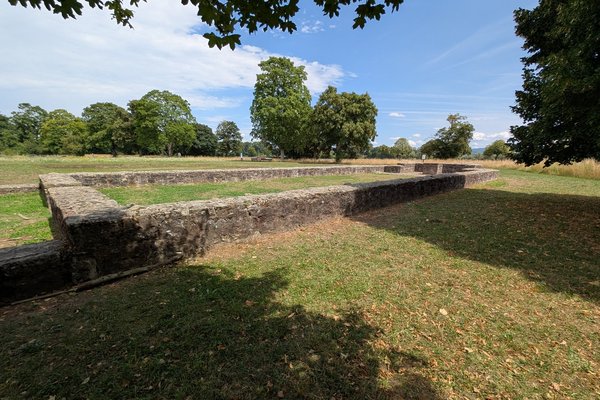Germany
Abbey and Altenmünster of Lorsch
The Abbey and Altenmünster of Lorsch are rare surviving monuments of the era of Charlemagne.
The Abbey, its gatehouse and the Altenmünster date from about 764 CE. Its “Königshalle” became the burial place for the Carolingian kings of the Eastern part of the Frankish Realm. The monastery also holds sculptures and paintings from the Carolingian era.
Community Perspective: The Königshalle (better known as Torhalle: gatehouse) is its most notable monument, as it has been preserved above ground in the best condition. Hubert has described it well. After 2014, the surrounding landscape was turned into a garden, so there are no obstructing views.
Site Info
Official Information
- Full Name
- Abbey and Altenmünster of Lorsch (ID: 515)
- Country
- Germany
- Status
-
Inscribed 1991
Site history
History of Abbey and Altenmünster of Lorsch
- 1991: Inscribed
- Inscribed
- 1990: Deferred
- More info required on boundaries etc
- 1989: Deferred
- Bureau - extend perimeter and provide info on protection
- Type
- Cultural
- Criteria
- iii
- iv
Links
- UNESCO
- whc.unesco.org
- Official
-
- kloster-lorsch.de — Kloster Lorsch
- Related
-
- de.wikipedia.org — Kloster Lorsch on the German Wikipedia
All Links
UNESCO.org
- whc.unesco.org — whc.unesco.org/
Official Website
- kloster-lorsch.de — Kloster Lorsch
Related Resources
- de.wikipedia.org — Kloster Lorsch on the German Wikipedia
News Article
- May 30, 2021 archdaily.com — Redesigning the Lorsch landscape
- Aug. 20, 2014 morgenweb.de — Free entrance at re-opening of Königshalle Lorsch
Community Information
- Community Category
- Religious structure: Christian
Travel Information
Frankfurt hotspot
Recent Connections
-
European Garden Heritage Network
Lorsch Abbey GardensSee www.eghn.org
-
Premonstratensians
"The monastery flourished throughout th… -
Aurochs
As part of the Lauresheim experimental …
Connections of Abbey and Altenmünster of Lorsch
- Individual People
-
-
Charlemagne
He was present at the consecration of the monastery church
-
- History
-
-
Carolingian Empire
-
Thirty Years' War
Was largely destroyed as result of this war in 1621
-
- Ecology
-
-
Aurochs
As part of the Lauresheim experimental archaeology project (it's in the buffer zone but closely connected to the early medieval era of the Lorsch WHS)
-
- Architecture
-
-
Pre-Romanesque
-
Romanesque
Torhalle, part of the Romanesque church
-
- Religion and Belief
-
-
Premonstratensians
"The monastery flourished throughout the 11th century, but in 1090 was ravaged by fire. (...) After Lorsch had been incorporated in the Electorate of Mainz (1232), it lost a large part of its privileges. The Benedictines were replaced first by Cistercians and later by Premonstratensians." (OUV) -
Benedictines
The monastery was settled by Benedictines from the Gorze monastery near Metz. (wiki) -
Christian Pilgrimage Sites
In medieval times Lorsch was a major Catholic pilgrimage site thanks to its relic of St. Lazarus -
Religious Relics
A relic of St. Lazarus was stored in the church until a fire in 1090 which destroyed it
-
- Human Activity
-
-
Hunting Lodge or Castle
A Baroque hunting lodge belonging to the Bishoph of Mainz was erected next to the King's Hall and is still standing
-
- Constructions
-
-
Purpose Built Visitor Centre
-
Dynastic Burial Places
German Carolingian kings
-
- WHS on Other Lists
-
-
European Garden Heritage Network
Lorsch Abbey GardensSee www.eghn.org
-
Memory of the World
Lorsch Pharmacopoeia (2013), The illuminated manuscripts of Charlemagne’s Court School: Codex Aureus of Lorsch (2023)See www.unesco.org
-
- Timeline
-
-
Built in the 8th century
The Abbey was founded between 760 and 764
-
- WHS Hotspots
-
-
Frankfurt hotspot
Frankfurt Hotspot
-
- Science and Technology
-
-
Libraries
Abbey of Lorsch is considered as the most significant library of the Carolingian period. Today, the inventory of the library is spread over more than 70 libraries worldwide -
Experimental Archaeology
Experimentalarchäologisches Freilichtlabor "Lauresham"
-
News
- archdaily.com 05/30/2021
- Redesigning the Lorsch landscape
- morgenweb.de 08/20/2014
- Free entrance at re-opening of Kön…
Recent Visitors
Visitors of Abbey and Altenmünster of Lorsch
- Adam Hancock
- Adrian
- Adrian Turtschi
- Alexander Barabanov
- Alexander Lehmann
- Alexander Parsons
- Aljaz
- A. Mehmet Haksever
- Ammon Watkins
- Ana Lozano
- Anna Wludarska
- Antonio J.
- Argo
- Ask Gudmundsen
- Aspasia
- Assif
- Astraftis
- a.thum
- Atila Ege
- awestix
- AYB
- basementonline
- BaziFettehenne
- Bernard Joseph Esposo Guerrero
- Bill Maurmann
- Bin
- brendairala
- Brendan Carroll
- Bropyk
- Can SARICA
- Caspar
- Cheryl
- Christer Sundberg
- Christian Wagner
- christof
- Christoph
- Christravelblog
- Claire Bradshaw
- ClaraHH
- Clyde
- Colossus
- Cristina Erba
- Csaba Nováczky
- ctravel
- CugelVance
- Daniela Hohmann
- Daniel Chazad
- Daniel Gabi
- Danieljbromberg
- Danny L
- David Aaronson
- David Berlanda
- Dimitar Krastev
- Dimitrios Polychronopoulos
- Dirk-pieter
- Dolemite92
- Dorejd
- Echwel
- Elaine McArdle
- Elia Vettorato
- Els Slots
- Emilia
- EmmonsLiu
- erdsaumnaht
- Erik Jelinek
- Errol Neo
- Eva Kisgyorgy
- Evgenii
- fabi-ddorf
- Fam39
- Fan Yibo
- Farinelli
- Federico P.
- Feldhase
- Femke Roos
- Filip Murlak
- Frederik Dawson
- FS
- GabLabCebu
- Gary Arndt
- George Gdanski
- GeorgeIng61
- Gernot
- Grendel Gongan
- Hadrianus
- Harald T.
- Harry Mitsidis
- Hasco
- Henri
- henrik_hannfors
- heywhatever2
- Hubert
- Iain Jackson
- Ingemar Eriksson
- Ivan Rucek
- Jakob F.
- Jakubmarin
- Janina Lehmann
- Jan-Willem
- Jan Zimmermann
- Jarek Pokrzywnicki
- Jasam
- Javier Coro
- Jean Lecaillon
- Jeanne OGrady
- Jeffrey Chai
- Jens
- Jesse S 2010
- Jezza
- Joel on the Road
- Jonas Hagung
- Jonas Kremer
- Joyce van Soest
- Jurre
- KarenBMoore
- Kasper
- Kbecq
- Kerékgyártó
- Klaus Freisinger
- Knut
- Krijn
- Kristin
- Lara Adler
- LaVale
- lichia
- Lisu Marian
- Liverpool
- ljowers
- Loic Pedras
- Luboang
- Lucas Del Puppo
- Lucio
- Ludvan
- Luis Filipe Gaspar
- Maciej Gil
- Maciej Gowin
- Mahuhe
- Malgorzata Kopczynska
- Małgosia Łupicka
- Manuelfunk
- marcel staron
- marc Rouserez
- Martin
- Martina Rúčková
- Marty
- Matejicek
- Matthewsharris
- Max
- MaxHeAnouBen
- MaYumin
- MH
- Michaela0705
- MichaelH
- Michael Novins
- MichaelStro
- Michael Turtle
- Mikko
- Mikko Syrjä
- Milan Jirasek
- Miloš Tašković
- Mohboh
- MoPython
- Mstrebl1990
- nan
- Nicole Lampos
- Nihal Ege
- NoahFranc
- Patrik
- Paul Schofield
- PeterH
- Peter Lööv
- Petteri
- Philipp Leu
- Philipp Peterer
- PlacesWeHaveBeenTo
- Rafał Kałczuga
- Ralf Regele
- Ralf Rotheimer
- Randi Thomsen
- Reisedachs
- Reza
- Rick Ohm
- Roel Sterken
- Roger Ourset
- Roman Bruehwiler
- Roman Raab
- Rudegirl
- Sabrina Liebehentschel
- Sandmann15
- Schnitzel
- scubarrie
- Sebasfhb
- Sehnsuchtsbummler
- Sergio Arjona
- Shandos Cleaver
- SirLoydd
- Solivagant
- Stanislaw Warwas
- Stijn
- Sturuss
- Svein Elias
- Szucs Tamas
- Tamara Ratz
- Taotao Chen
- Tarquinio_Superbo
- Tevity
- Thomas Buechler
- Thomas Harold Watson
- Thomas van der Walt
- triath
- Tsunami
- Twobaconsandaboston
- Vanessa Buechler
- VLabhard
- WalGra
- Walter
- WILLIAM RICH
- Wojciech Fedoruk
- Wo_ko
- wrung24
- Xiquinho Silva
- Yang Chengyu
- YaroMir
- Yevhen Ivanovych
- Yongcheng Liu
- Zhenjun Liu
- Zoë Sheng
- Zos M
Community Reviews
Show full reviews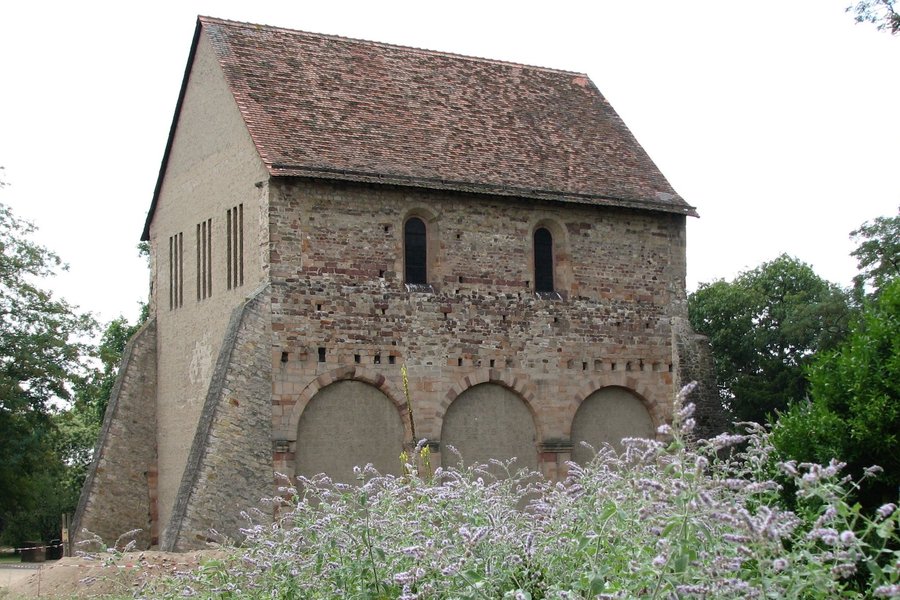
We visited this WHS in June 2025 and were pleasantly surprised, especially considering the generally reserved tone of previous visitors. Admittedly, the Abbey and Altenmünster of Lorsch are not among Germany's most unique or impressive World Heritage Sites. Yet, we enjoyed our stay, mainly because of the charming town of Lorsch itself and the enthusiasm of our tour guide. As previous community members have already described the site well, I would like to focus on some practical tips for visiting.
Getting to Lorsch
As already suggested, the city of Mannheim is a good choice for a base, not only for Lorsch but also for other World Heritage Sites in the area. If you have the "Deutschlandticket" (a monthly subscription ticket that allows you to use all regional transportation in Germany), travel on all regional express trains is included, making it easy to reach various sites from Mannheim. Depending on your travel plans, it may actually be cheaper to purchase this ticket. Just remember to cancel the subscription before it auto-renews. Lorsch is about one hour from Mannheim by public transportation, and the main building of the Abbey can be easily reached on foot.
Tips for the visit
Based on our experience, the following tips may help you make the most of your visit:
- The Altenmünster itself is located further outside of town, although you can easily combine visits to both sites. If you are pressed for time, feel free to …
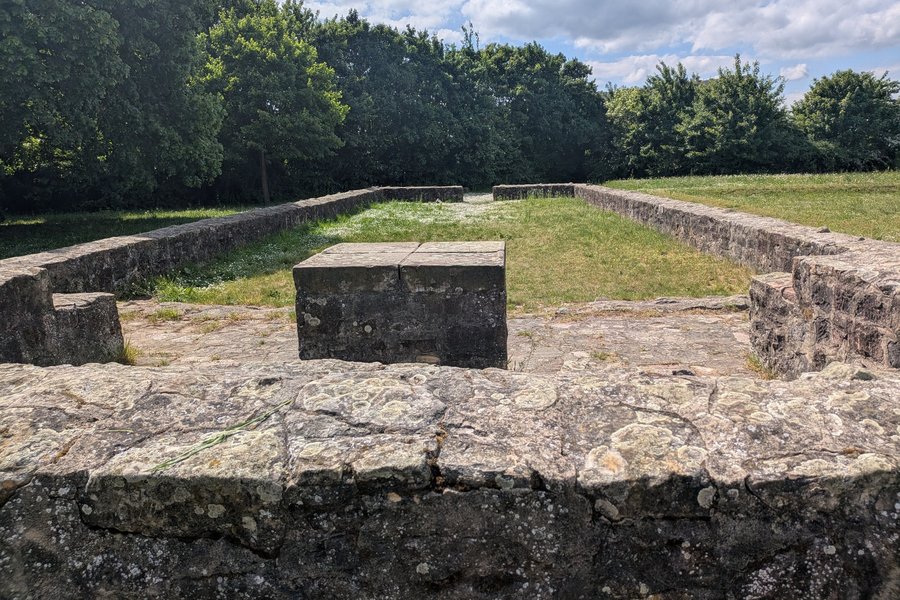
Visiting Lorsch today, you might find it to be a rather quiet and uneventful town. However, it's fascinating to imagine that during Carolingian and medieval times, Lorsch was a bustling monastery. One of the unique aspects of Lorsch was that it was among the first abbeys North of the Alps to possess a relic. Before this, strict rules mandated that all relics be kept in Rome. Frankish Count Cancor and his cousin, Abbot Chrodegang, managed to relax these rules, allowing Lorsch to house a relic.
I think the "gifting" of the relic has to be seen in light of the ascendency of the Franks. The Catholic Church's became increasingly reliant on Charlemagne and the Franks for protection. Having a relic would foster this relationship and also strengthen the ongoing Christianisation efforts of the Franks. Alternatively, as our guide suggested, it could have been due to pure corruption and theft. Regardless, Lorsch became very popular, thanks to the relic of Saint Nazarius being located there, offering pilgrims a chance of absolution.
Over the centuries, the monastery continued to grow, acquiring more lands. By the 13th century, it was taken over by the Archbishop of Mainz and gradually lost its national significance. The ultimate decline came with the Reformation, during which the abbey was abandoned, and its treasures were moved to Heidelberg.
Today, what remains are mostly ruins and a few buildings. The highlight is the Torhaus, which you need to join a tour to enter. However, it's rather plain inside, and …
Keep reading 0 comments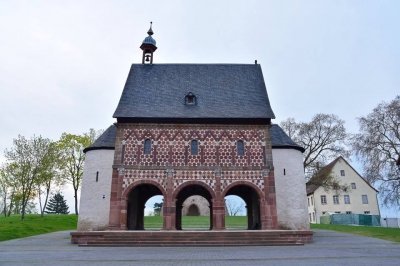
In case that you read and looked previous reviews and their attached photos like I did before I went to this World Heritage Site, you would immediately have noticed that a lot have changed when you saw the famous Gatehouse of Lorsch Abbey. This is something remarkable especially for World Heritage Sites that well known for their preservation status. Since 2014 the whole complex has been transformed into opened stylish modern lawn park, no wall and no tree to obscure the view of the old Romanesque Church behind the Gatehouse. The Germans transformed the whole landscape and made the church to be the main focus of the whole park and forming the nice straight vista between the Gatehouse and the Church.
The Gatehouse was indeed really nice, I really loved the bricks alignments making at least three different patterns creating “levels” to the building, something simple but really beautiful. I hardly believed its old age as the Gatehouse was in perfect condition, new and shiny. I walked to the church and really surprised to find that there was no wall. It was simply become an open hall, maybe when they restored the church, they decided to take out all thing that was not originally from Carolingian time. Because the wall was out, I was amazed how strong of the structure to still standing despite its Early Middle Age origin. Well apart from the Gatehouse and the church hall, there was nothing much to see, since I did not plan to …
Keep reading 0 comments
This must be one of the tiniest WH sites in the world - it basically consists of just one rather small building in the centre of the pretty town of Lorsch, near Darmstadt. The building, known as the Torhalle or Königshalle - the exact purpose is still a bit of a mystery - is well preserved, considering its age, and it is one of the very few vestiges from the Carolingian era, which was so important for European history. You can go inside and see the upper floor only with a guided tour arranged by the tourist office next to the building - it certainly provided many insights you wouldn't have got from just looking at it from the outside. Most of the frescoes inside are from a later period, but some are from around the time of its construction - a true window into a very distant past. The Altenmünster, featured rather prominently in the name, is really just a foundation wall and nothing more, and about a 15- or 20-minute walk away from the main building (although it is very pleasant walk through fields). This is a very easy site to tick off for collectors, but I would only advise you to visit it in combination with a guided tour - otherwise you will miss a lot. I visited Lorsch on a full day trip from Frankfurt, together with the Messel Pit - easily doable by public transport.
Keep reading 0 comments
I recently visited Lorsch upon its opening after lengthy renovations. I would like to give some information regarding some new developments there.
The Carolingian Königshalle has been now completely renovated and it is again possible to visit its interior. As said in other reviews, the Carolingian frescoes barely survived and the Gothic ones that are present are not that spectacular. Nearby is the only other original building that survived from the Abbey. It is a Romanesque chapel that used to be an extension to a large Carolingian basilica which did not survive. You can appreciate its huge dimensions following its foundations that are still visible. It used to be one of the largest churches in the world at the time of its construction. Charlemagne himself is claimed to have been there for its consecration, evidence for the role this major abbey played during its heyday. The chapel is now being excavated and it will probably open to visitors in summer 2015.
Next to these two buildings on the abbey hill are the Zehntspeicher - a 16th century grain storage room and the herb garden. The Zehntspeicher is planned to house an archaeological exhibition starting summer 2015. The nearby herb garden is a reconstruction of might have been the first medieval herb garden. The medical practices that are described in the Lorsch Herb Book were groundbreaking in the medieval world. It is often considered as the first medical book in Post-Roman Christian Europe.
Walking down the hill you reach the Altmünster. …
Keep reading 0 comments
The last time I visited the gatehouse was in the late winter of 1982 with my father. We were coming back from a joint guitar lesson with the guitarist Dieter Henze in Darmstadt. It was late and cold, but we were both game for a quick stroll around the grounds at around 22:30.
We had developed a taste for this sort of activity after walking from the US Army housing in Worms, down to the cathedral, during a gentle yet steady snowfall on Christmas Eve, 1981. There is something about early-medieval architecture and dark winter nights that just goes together.
We had previously visited the site in 1977, when my mother (a native of Bad Kreuznach, Germany) recommended we go there after reading about it in her copy of "Schatzkammer Deutschlands". This is a great resource for the tourist of history in Germany as it gives highly detailed entries on the smallest to greatest historical sites in the country. It can make a drive that much more worthwhile, especially in a country as stuffed with "treasures" as Germany.
I always liked the site from our very first visit. It is small, manageable, easy to grasp, and deceptively simple. There is far more to see and learn than the size of the site might lead one to believe. And if you are there when very few (or no) people, it is especially wonderful.
I guess I retain such fond memories of Lorsch and the Torhaus because of its associations with my …
Keep reading 0 comments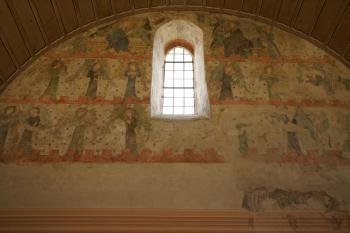
The Torhalle in Lorsch is one of the rare buildings from the Carolingian period that has been preserved in its original appearance. This fact alone justifies the inscription. Moreover the building is an architectural gem. I am always fascinated and impressed by the beauty of the ornate faҫade. But probably I am biased in my opinion because the Lorsch Abbey was the first WHS that I have visited. Lorsch is only a few kilometres from my birthplace and I visited the remains of the Abbey many times, the last time in July 2012. Nevertheless, I can understand that many visitors are disappointed if they expect a large monastery complex like in Maulbronn. In Lorsch, only the Carolingian Torhalle and the rather inconspicuous remains of the Romanesque church are preserved.
The Torhalle is unexpectedly small (only about 11 metres wide and 7 metres in height), but the design of the faҫade indicates its former exceptional importance. Both, the east and west faҫades are decorated with ionic capitals, fluted pilasters, columns and friezes. Most striking is the mosaic-like design with red and white stones. These stones are integral parts of the brickwork, not subsequently attached ornaments. Maybe one reason why they are so well preserved. Unusual for such a small building is that there are stair towers on both sides. The exterior of the hall remained almost unchanged until today. The only major modification was at the end of the 14th Century, when the Carolingian saddle roof was replaced by a Gothic …
Keep reading 0 comments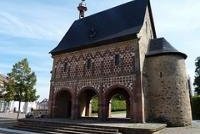
I visited this WHS in September 2010. Lorsch is home to several rare remains of the Carolingian era. The 1200 year old 'Torhall' is still in perfect condition. After sightseeing head opposite the Torhall and enjoy a local beer at the Biergarten.
Keep reading 0 comments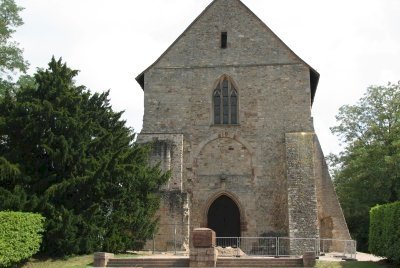
Lorsch is a little town just south of Darmstadt. A few years ago I experienced a "near-miss" in visiting this WHS, as I got stranded at a nearby train station on a Sunday.
This time I decided at the last minute to drop by Lorsch during my planned visit to the Messel Pit Fossil Site.
I didn't expect too much, being warned by Martha Wiley's review below. Lorsch however is certainly prepared for an influx of visitors, as there is an enormous parking lot next to the former Abbey (it can hold hundreds of cars and tour buses). I parked right at the entrance, as there were few other vehicles about. A short walk with explanatory displays then takes you to the monument.
The landmark gatehouse is pretty and of a remarkable age. There are some benches to sit on from where you can admire the building. A part of the church is also (or again) still standing. And you can walk around in the former gardens. Everything is well kept, as with all of the WHS I saw in Germany.
The Abbey of Lorsch may be a bit underwhelming, but it's a testimony to the Early Middle Ages when this part of Germany played an important role in the empire of Charlemagne and his successors. Reportedly there are also good frescoes inside the gatehouse, but they can only be seen by groups in pre-arrangement.
Keep reading 0 comments
Lorsch a World Heritage Site? Whatever for? This was the most disappointing site I've been to yet. It is billed as "Abbey and Altenmuenster of Lorsch" but it turns out that most of the resource is underground (as in actually in the ground covered with dirt) so can't be seen. There are 2 buildings above ground, a small (but well-photographed) gatehouse and a church which is used for storage so can't be entered. There is an active archaeological dig going on in a corner of the site but it is fenced and screened with tarps so you can't see that either. The museum in town did have the results of underground mapping of the remnants of the abbey, which might be interesting to some people for about 5 minutes. Bur overall, I say, go to Maulbronn if you want to see an abbey in this part of Germany.
Keep reading 0 comments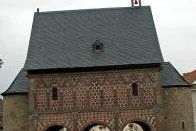
In our trip to Germany we have seen the beautiful Torhalle of the small town of Lorsch, one of the few Carolingian buildings that retains its original aspect. It is the former entrance to an abbey founded in 760-764 by its first abbot Chrodegang, also the bishop of Metz, who brought here monks from Gorze before 764 and in 765 donated to them the relics of Saint Nazarius, acquired in Rome. In 767, Thurincbert, one of his brothers, donated new lands in sand dunes safe from the floods 500 metres from the original site and in 774 the new church of Saints Peter, Paul and Nazarius was consecrated by the archbishop of Mainz, in the presence of Charlemagne. Between 778 and 837 the abbots Helmerich, Richbod and Adelog made some improvements, as remembered in the chronicles of the abbey. From the death of Louis II the German (876), it became the burial place of the Carolingian kings and his son Louis III the Young (876-882) built a crypt for the remains of himself and his father and there were also buried his son Hugo and Cunegonda, wife of Conrad I; the abbots obtained the title of princes. The abbey flourished in the 10th century, but was destroyed by fire in 1090 and reconstructed in the 12th century. In the 13th century Lorsch was incorporated (1232) in the Electorate of Mainz and lost many of its privileges and first the Cistercians and later the Premonstratensians replaced the Benedictines; after another fire …
Keep reading 0 comments
